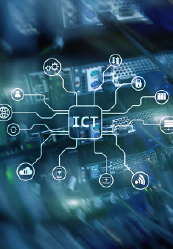Keeping Data Safe with the Data Collection and Labeling Market
Data has become a pillar of innovation in the digital age, influencing choices and forming strategies across industries. However, careful procedures are needed to go from unprocessed data to insightful information. In order to provide a crucial link in the ecosystem driven by data, the data collection and labeling market enters the picture in this situation. In this blog, we explore the world of data gathering and labeling, looking at its importance, data types, market environment, growth drivers, and various vertical applications.
What is Data Collection and Labeling?
Data collection and labeling encompass a series of methodologies and techniques that involve the acquisition, categorization, and enhancement of raw data. It is the essential groundwork that facilitates the development of accurate and robust machine learning algorithms and artificial intelligence systems. By meticulously annotating and labeling data, the market ensures that algorithms can recognize patterns and make informed decisions.
Types of Data
Data collection and labeling extend to various types of data, each serving distinct purposes:
- Text: Text data collection and labeling involve processing and categorizing textual information from sources such as documents, reviews, and social media posts. This enables sentiment analysis, text summarization, and language processing.
- Image/Video: Visual data is vital for image recognition, object detection, and video analysis. Labeling techniques involve annotating objects, scenes, and actions within images or videos, enhancing the ability of algorithms to interpret visual content. This segment is expected to witness the largest growth, ultimately boosting the data collection and labeling market growth.
- Audio: Audio data collection and labeling encompass transcription, annotation, and categorization of audio content. This facilitates tasks like speech recognition, sound classification, and voice command interpretation.
To Get Insights on the Data Collection and Labeling Market: Request for a Customized Report
Pioneering Insights through Precision
The market is experiencing significant growth, driven by an array of factors that underscore its critical role in modern data-driven enterprises. The data collection and labeling market was valued at USD 3.17 billion in 2023 and is expected to grow at a CAGR of 28.6%, generating a whooping revenue of USD 30.49 billion by 2032.
ey drivers include:
- Rapid Technological Advancements
- Increasing Demand for AI Applications
- Growing Complexity of Data
A Tapestry of Applications
Data collection and labeling find applications across a spectrum of industries, each harnessing its potential to drive innovation and insights:
- Automotive: Autonomous vehicles require accurately labeled data for object detection, path planning, and driver assistance systems.
- Government: Government agencies utilize labeled data for tasks such as facial recognition, criminal profiling, and public safety analytics.
- Healthcare: Labeled medical data contributes to diagnostic accuracy, disease detection, and drug discovery, revolutionizing patient care.
- IT: The IT sector relies on labeled data to develop and refine AI-driven solutions, including natural language processing, recommendation systems, and cybersecurity. This segment accounted for the largest data collection and labeling market share in 2022.
- BFSI: The banking and financial sector leverages labeled data for fraud detection, risk assessment, and customer profiling.
- Retail & E-commerce: Labeled data enhances customer behavior analysis, inventory management, and personalized marketing strategies.
- Others: Data collection and labeling have applications in diverse sectors, including agriculture, energy, entertainment, and more.
Pioneering Progress through Precision
The data collection and labeling market stand as an unsung hero in the realm of data-driven innovation. Its meticulous processes provide the foundation for accurate, reliable, and efficient machine learning algorithms and AI systems. From shaping autonomous vehicles to revolutionizing healthcare diagnostics, its impact spans industries, driving progress and insights.
As industries continue to embrace the power of data, the industry’s significance only grows, solidifying its role as a catalyst for technological evolution and transformative advancements.


